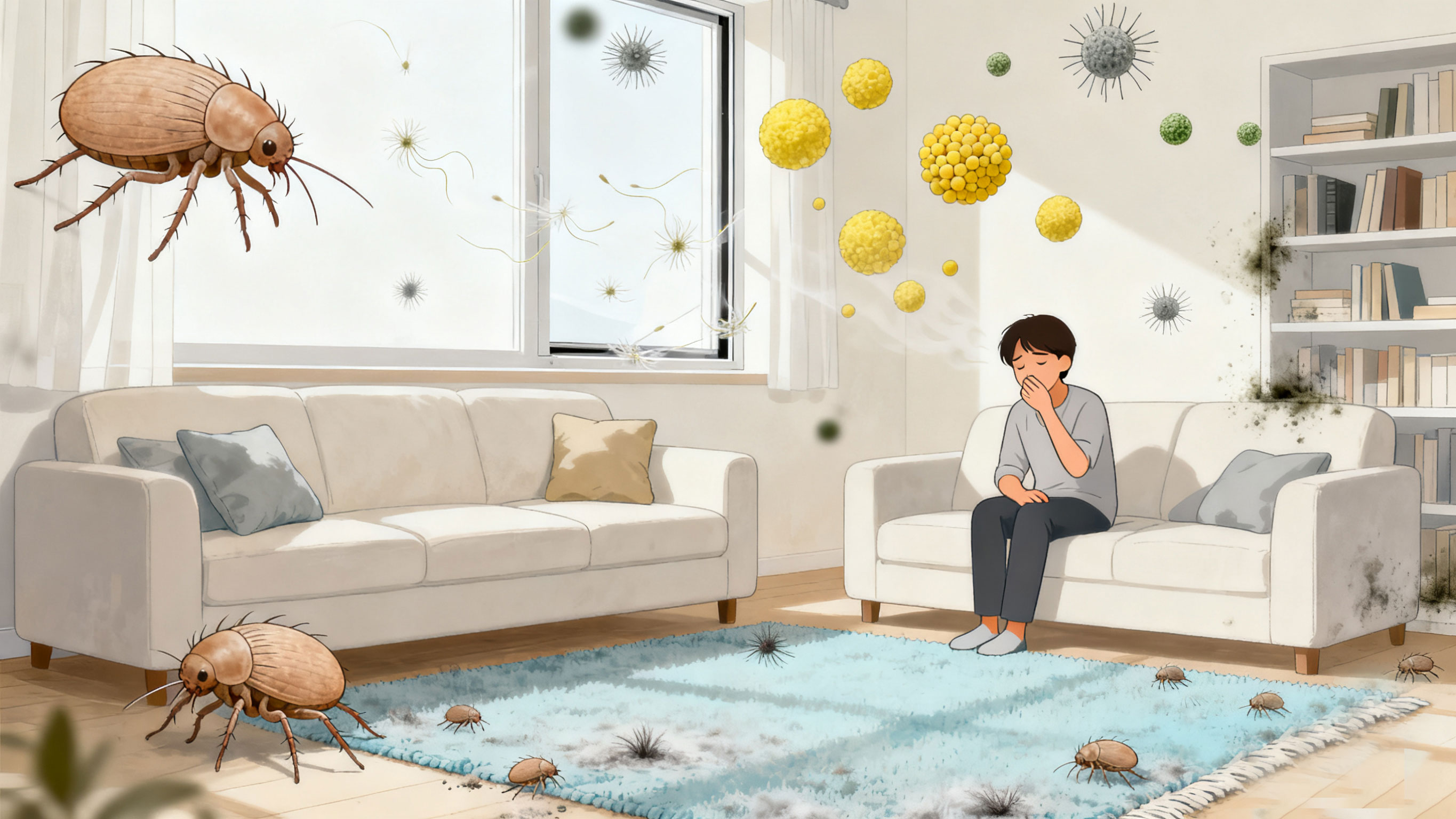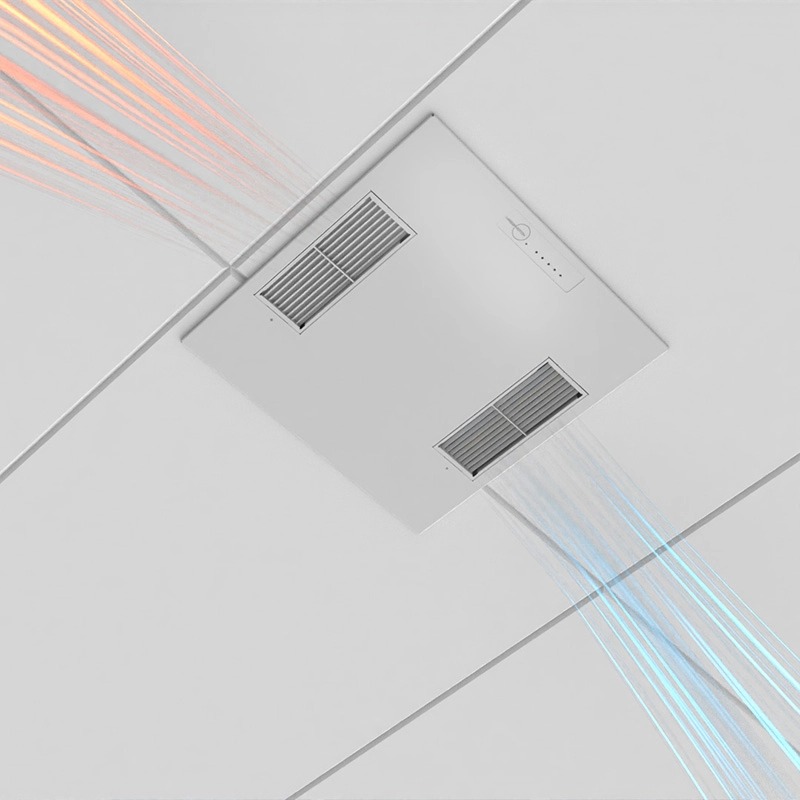Author: Site Editor Publish Time: 13-09-2025 Origin: Site











Allergies are more than just a seasonal nuisance—they impact daily comfort, sleep quality, and even long-term health. While traditional solutions like medication or air purifiers can reduce symptoms, they often fail to address the root cause: airborne allergens and pathogens circulating indoors. This is where a UVC Air Disinfection System becomes a game-changer. By harnessing ultraviolet-C (UVC) light to neutralize bacteria, viruses, mold spores, and allergens in the air, these systems offer a proactive way to improve air quality and reduce allergic reactions.

Allergies occur when the immune system reacts to substances like pollen, dust mites, pet dander, or mold spores. Indoors, these allergens can accumulate and circulate through HVAC systems, making symptoms persistent even when outdoor exposure is limited. Poor air circulation, high humidity, and inadequate ventilation make matters worse. Unlike surface cleaning, which removes visible dust, air purification directly targets the microscopic irritants people inhale. A UVC Air Disinfection System focuses on neutralizing these allergens at the source by sterilizing the air itself, reducing exposure and easing allergy symptoms.
UVC light is a specific wavelength (200–280 nm) that disrupts the DNA and RNA of microorganisms, preventing them from reproducing and causing harm. When applied to indoor air systems, UVC lamps are placed inside HVAC ducts or standalone purifiers to expose passing air to germicidal radiation. This process does not use chemicals, filters, or fragrances—only light energy. For allergy sufferers, this means that mold spores, bacteria, and even viruses circulating in the air are neutralized before reaching your breathing space. Importantly, a UVC Air Disinfection System doesn’t just trap allergens like HEPA filters do; it actually inactivates them, making the air cleaner and safer.

While HEPA filters and ionizers are popular, they function differently than UVC systems. HEPA filters trap particles but require frequent replacement, and ionizers can release ozone, which may irritate sensitive lungs. A UVC Air Disinfection System, in contrast, operates silently and continually, disinfecting the air at a microbial level. The table below highlights the differences:
| Feature | HEPA Filter | Ionizer | UVC Air Disinfection System |
|---|---|---|---|
| Removes allergens | Yes | Partial | Yes (neutralizes at DNA level) |
| Maintenance | High | Moderate | Low (lamp replacement 1–2 years) |
| Ozone production | No | Possible | No |
| Effectiveness vs. microbes | Limited | Limited | High |
For allergy sufferers, the long-term benefit of UVC is its ability to deactivate mold spores and microbes before they spread, reducing the allergen load at its source.
The effectiveness of UVC systems goes beyond simple dust reduction. They deliver multiple benefits directly linked to allergy relief:
Neutralizing mold spores: Mold is a major indoor allergen. UVC destroys mold at the cellular level, preventing colonies from releasing spores into the air.
Reducing dust mite allergens: While UVC doesn’t kill dust mites directly, it neutralizes microbes that feed on organic matter, indirectly reducing allergens.
Improving respiratory comfort: Cleaner air lowers the allergen load, making breathing easier and reducing the severity of sneezing, congestion, and watery eyes.
Supporting better sleep: Continuous air disinfection ensures allergy symptoms don’t peak at night, when air circulation slows.
A UVC Air Disinfection System works silently in the background, making it ideal for households where consistent air quality improvement is needed.
Choosing and installing a UVC system requires considering factors such as air volume, HVAC design, and exposure levels. Professional installation inside ducts ensures maximum exposure to circulating air, while portable units can be placed in bedrooms or offices for targeted use. The installation process typically involves placing a UVC lamp within the air handler or return air duct, allowing continuous sterilization without disrupting airflow.
| Installation Type | Best For | Maintenance Needs |
|---|---|---|
| In-duct UVC system | Whole-home/office use | Lamp replacement every 1–2 years |
| Portable UVC unit | Bedrooms, small offices | Filter cleaning + lamp replacement |
For allergy relief, in-duct systems are most effective because they treat the entire home’s air supply. However, portable units can be an excellent complement in high-use areas.
UVC light is highly effective but must be used correctly. Direct exposure to skin or eyes can be harmful, which is why most systems are installed inside HVAC ducts or enclosed chambers where light cannot escape. When buying a UVC Air Disinfection System, ensure it complies with safety standards and includes shielding to prevent leakage. Additionally, consider models that incorporate monitoring systems to alert users when bulbs need replacement, since lamp intensity declines over time. Used responsibly, UVC air disinfection is both safe and beneficial for allergy sufferers.

The initial investment in a UVC Air Disinfection System may be higher than a standalone air purifier, but the long-term benefits justify the cost. Lower maintenance requirements, fewer filter replacements, and improved health outcomes contribute to value. For allergy sufferers, fewer doctor visits, reduced reliance on medication, and better sleep are significant returns on investment.
| Cost Factor | HEPA Purifier | UVC Air Disinfection System |
|---|---|---|
| Initial purchase | $200–$800 | $500–$1500 |
| Annual maintenance | $150–$300 | $50–$200 |
| Lifespan (average) | 5–7 years | 8–10 years |
Over time, UVC systems provide superior microbial control at a lower annual operating cost, making them a practical choice for long-term allergy relief.
Allergy sufferers need more than temporary symptom relief—they need a solution that addresses allergens at their source. A UVC Air Disinfection System offers exactly that by neutralizing mold spores, bacteria, and other airborne irritants before they reach your lungs. Unlike filters that merely trap particles, UVC technology actively inactivates allergens, creating a cleaner and healthier indoor environment. With proper installation and maintenance, UVC air disinfection can transform living and working spaces into safe havens for those struggling with allergies.
1. Does a UVC Air Disinfection System completely eliminate allergies?
No, but it significantly reduces airborne allergens, making symptoms less severe and easier to manage.
2. Is a UVC Air Disinfection System safe for pets and children?
Yes, when installed properly inside ducts or enclosed units. Direct exposure to UVC light should always be avoided.
3. How often do UVC lamps need replacement?
Typically every 12–24 months, depending on usage and manufacturer recommendations.
4. Can UVC replace HEPA filters?
Not entirely. While UVC neutralizes microbes, HEPA filters are still useful for capturing dust and larger particles. The best results often come from using both technologies together.
5. Do portable UVC air purifiers work as well as in-duct systems?
Portable units are effective for smaller rooms but cannot match the whole-home coverage of an in-duct UVC system.